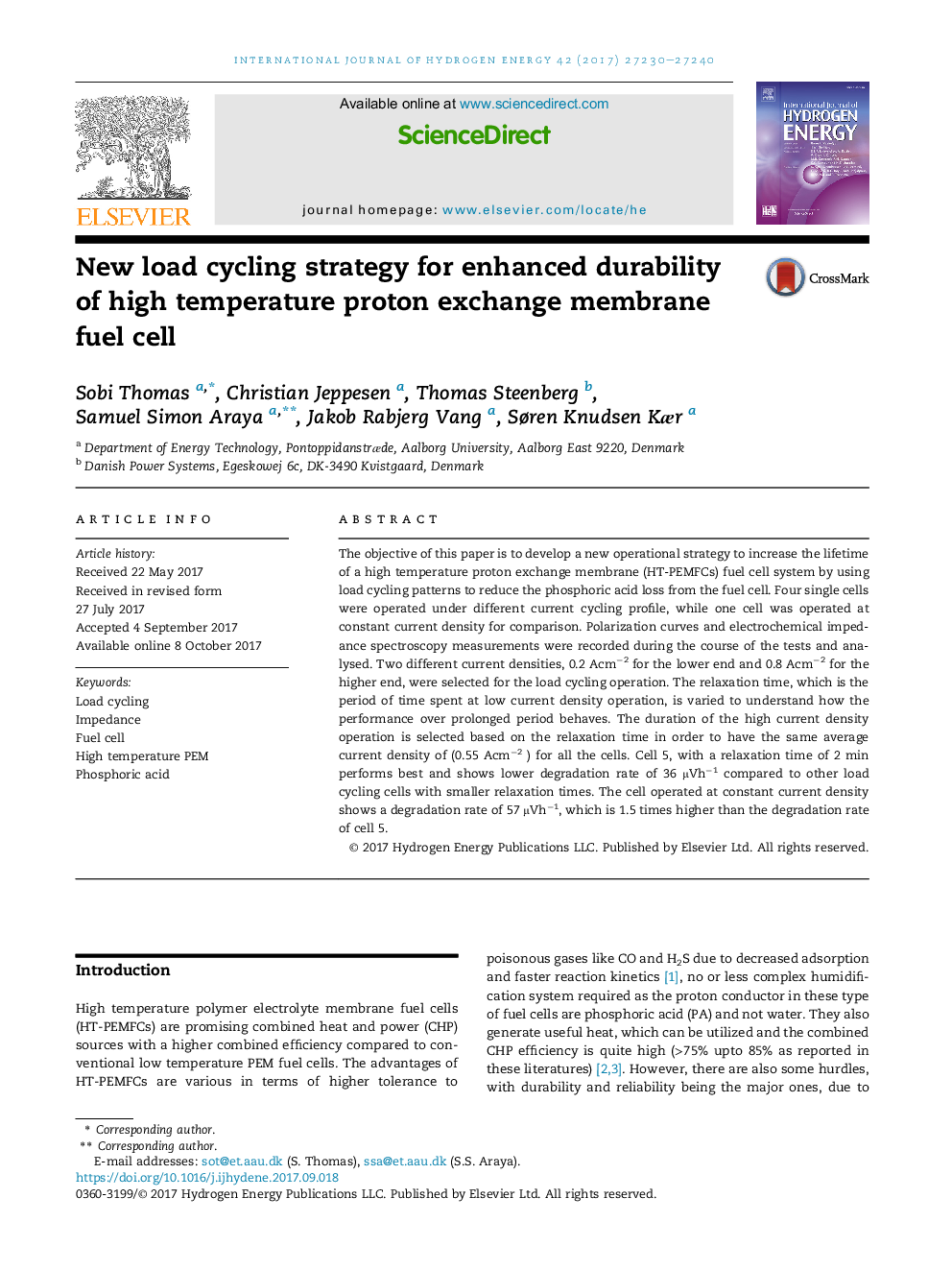| Article ID | Journal | Published Year | Pages | File Type |
|---|---|---|---|---|
| 7709662 | International Journal of Hydrogen Energy | 2017 | 11 Pages |
Abstract
The objective of this paper is to develop a new operational strategy to increase the lifetime of a high temperature proton exchange membrane (HT-PEMFCs) fuel cell system by using load cycling patterns to reduce the phosphoric acid loss from the fuel cell. Four single cells were operated under different current cycling profile, while one cell was operated at constant current density for comparison. Polarization curves and electrochemical impedance spectroscopy measurements were recorded during the course of the tests and analysed. Two different current densities, 0.2 Acmâ2 for the lower end and 0.8 Acmâ2 for the higher end, were selected for the load cycling operation. The relaxation time, which is the period of time spent at low current density operation, is varied to understand how the performance over prolonged period behaves. The duration of the high current density operation is selected based on the relaxation time in order to have the same average current density of (0.55 Acmâ2 ) for all the cells. Cell 5, with a relaxation time of 2 min performs best and shows lower degradation rate of 36 μVhâ1 compared to other load cycling cells with smaller relaxation times. The cell operated at constant current density shows a degradation rate of 57 μVhâ1, which is 1.5 times higher than the degradation rate of cell 5.
Related Topics
Physical Sciences and Engineering
Chemistry
Electrochemistry
Authors
Sobi Thomas, Christian Jeppesen, Thomas Steenberg, Samuel Simon Araya, Jakob Rabjerg Vang, Søren Knudsen Kær,
